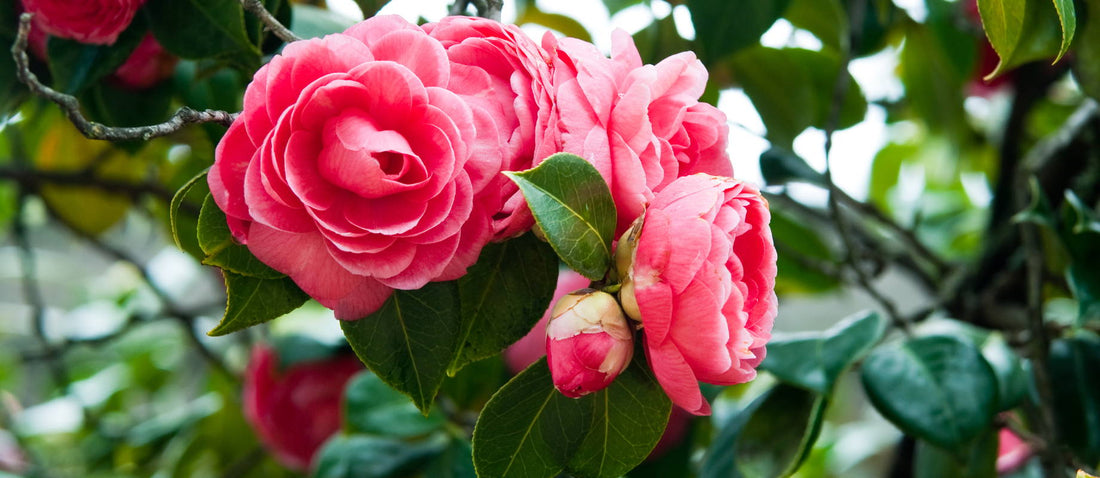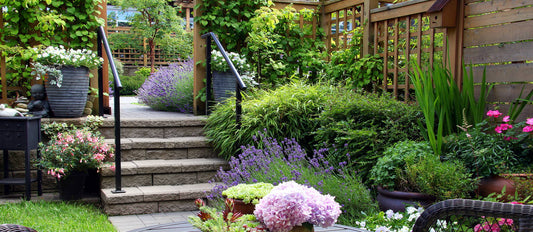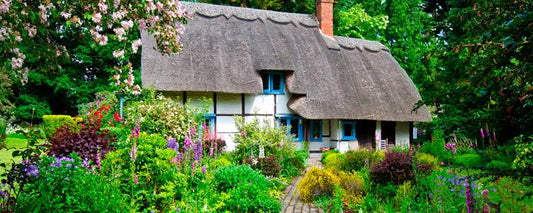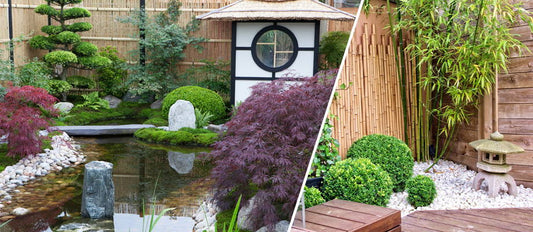The evergreen Japanese Rose (Camellia japonica) flowers exuberantly from February to May with delightful red, pink or white blooms. The Camellia is also known as Japanese Camellia. The flowers are reminiscent of roses but this plant is an entirely different species to the rose. The shrub can reach a height of three to eight metres and approximately 1.5 metres wide. Originally a woodland shrub it is sufficiently hardy and will flower abundantly for a long time. Would you like one in your garden? Then read the tips and tricks below!
The name ‘Camellia’
There are a couple of different stories about how Camellia japonica was named:
- It could be we have to thank Josephus Camellus, an Englishman who lived at the end of the 17th century and was a missionary in the Philippines. Due to his interest in medicinal plants, he identified many species, sending drawings and dried plants to the West to pass on his knowledge.
- Another story tells how it was the Dutch Linnaeus who named the shrub after a Bohemian Jesuit priest called Georg Joseph Kamel (b. 1661). This man Latinised his name to Georgius Josephus Camellus and supposedly introduced the plant, from Japan. This seems the more likely story as for many Dutch and Germans it was more common for people to Latinise their names, than in England.
Planting the Camellia japonica
1/ In the garden
- Choose a sheltered, partly shaded spot in your garden (west facing preferably) – as long as the Japanese Camellia is not stood in the early morning sun.
- Dig a wide hole in your garden.
- The soil should be well-draining. Improve your soil with some garden compost, humus rich and lime rich manure and perhaps even some sharp sand. This plant likes a fairly acidic, iron enriched soil. Believe it or not if you add some rusty nails it will be good for the soil!
- Plant your Camellia in the plant hole, fill with soil and heel well in.
- Water immediately after planting, preferably with rain water.
2/ In a flower pot
- Choose a large pot or planter with holes in the base.
- Cover the bottom of the pot with a layer of gravel or potsherds and add your potting compost.
- Remove your Camellia from the nursery pot and plant it in your pot.
- Fill the plant pot up with more of your potting compost.
- Press lightly in and water immediately, preferably with rain water.
- Stand your potted Camellia in part shade (west facing if possible) and keep it out of early morning sun.
Looking after the Japanese Camellia
- Water - Moisture is essential for healthy growth of the Camellia japonica. You need to keep watering this plant all year round, especially in dry periods, (preferably with rain water). Rain water (or decalcified water) is softer than tap water, that’s why it is more suitable. Don’t allow your Japanese (common) Camellia to dry out, but don’t drown it either.
- Fertilising - This plant likes an iron rich soil. Iron sulphates, well-rotted manure and potassium rich fertilisers will be appreciated. This is an ornamental shrub that enjoys a potassium rich fertiliser. After feeding, spray the soil with (rain) water. Japanese Camellia generally doesn’t need a lot of feed as too much causes the plant to produce more leaves and fewer flowers.
- Winter protection – Most camellias are sufficiently hardy but if a winter is particularly severe you may lose the already formed flower buds. When severe weather is forecast, you might want to give the plant some extra protection for the winter. A potted camellia should be brought indoors to a frost-free area well before the first frosts, to a cool, light spot like the shed, or a garage.
Problems that can affect your Camellia japonica:
Here are some useful tips:
- Yellowing foliage – indicates iron deficiency. Add iron sulphate to the soil, well-rotted manure and potash.
- Brown foliage – indicates too much fertiliser. Leave it without any type of fertiliser for a while.
- Shrivelled leaves, dried up buds – lack of water. Water more regularly but ensure good drainage too.
- Tainted buds – make sure your plant isn’t getting any early morning sun and give the plant protection from severe frost.
- Black foliage – this is caused by a type of pest. Wipe off with a lukewarm, damp cloth.
- Very few flowers – allow a young plant to get established before expecting it to flower abundantly. Older plants with too few flowers are perhaps too well fed. Miss a couple of feeds then follow on with plant food for flowering plants.
Pruning the Camellia japonica
Pruning camellia shrubsis best done immediately after flowering in the spring. It then shoots again and forms new bud the following year. Only prune where necessary to rejuvenate the plant and take out really long shoots that tend to grow from the centre. Camellias don’t really need much pruning but it can stimulate flowering and it helps to shape the plant to your requirements. Always prune to the second new leaf on a shoot. Camellia bushes are surface rooters so be careful when using a hoe – do it at a good distance from the main stem or you may damage the roots.







